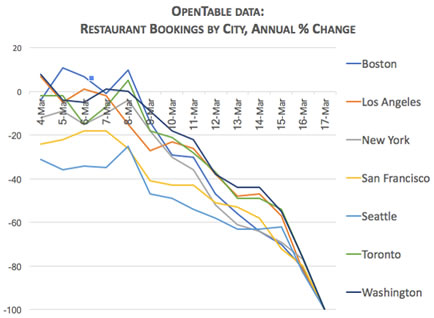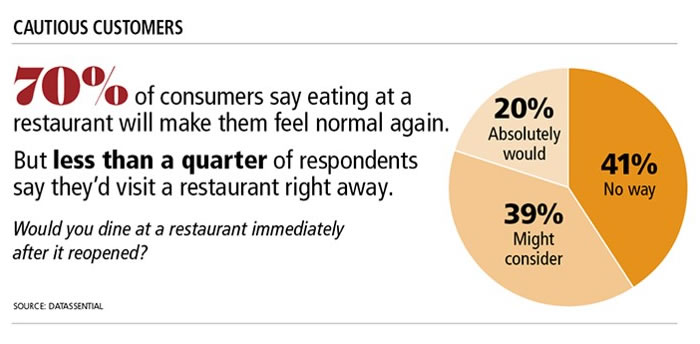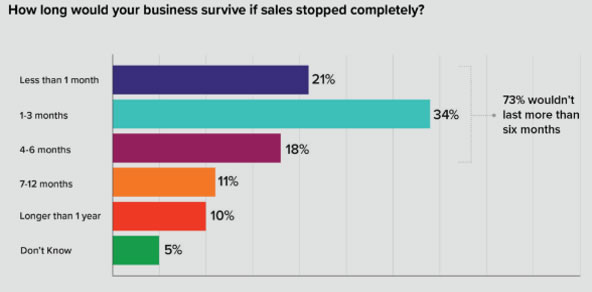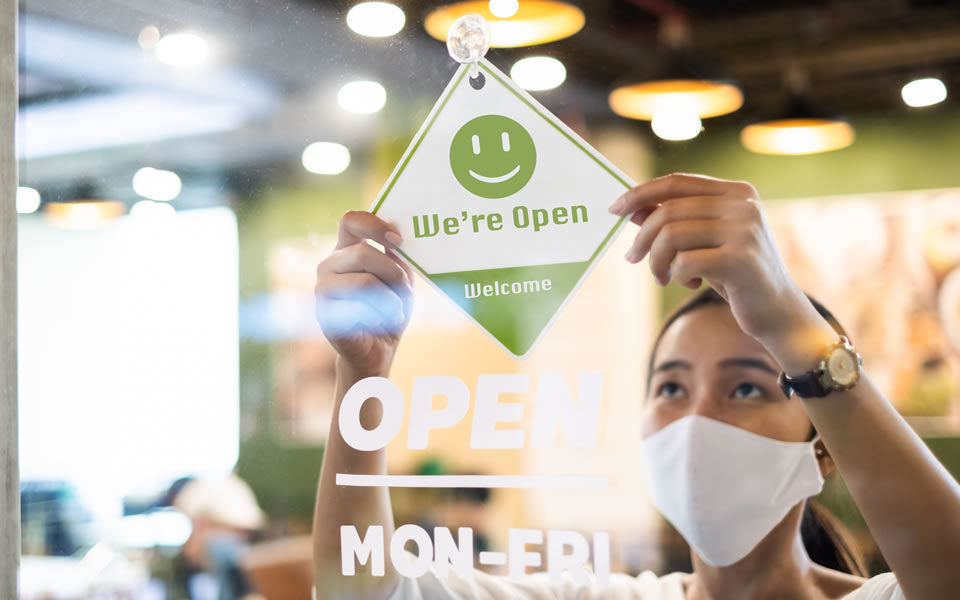Responsible Reopening – Part One: Innovative Practices in Restaurant Operations in the New Normal
By Patrick O’Reilly, Principal, Advisory Services
In this unprecedented time, innovation is the key to survival. During the pandemic, restaurants quickly shifted to take out and delivery, once dine-in was no longer an option. Now, many parts of the country are re-opening as stay-at-home orders are lifted. But consumer and government expectations about physical distancing, hygiene, and other factors dictate that restaurateurs must change their operations to safely bring diners back to their locations.
The new normal for restaurant patrons and their hosts includes physical distancing (not always easy in a social space), occupancy limits, social tension, and varying expectations (too much too soon? Why so restrictive?). Many of us are left asking how best to walk the line between safety and convenience. We already see online ordering from smartphones using a QR code and disposable single use menus. We are also waiting longer for tables in areas less than half full due to more stringent density thresholds and staggered seating in order to limit personal contact in the space.
It is a bit paradoxical to go out for a “social gathering” and try to remain a safe distance from those you do not live with all the time. Restaurant owners and operators need to put safety measures in place to allow their patrons and employees the opportunity to be safe while socializing and dining.
Several states have established lower occupancy limits, whether a percentage of full occupancy or a set figure based on 6-foot separation of tables and seats. These capacities are typically augmented by a relaxation of outdoor seating rules. Seattle, New York, and many other cities are closing city streets to vehicular traffic to allow cafes and restaurants to move tables out to sidewalks where seating, let alone alcohol service, was not previously permitted. This is the new normal, at least for now.
Some restaurateurs are struggling to manage the anxiety of reopening. There is tremendous social tension around the decision to reopen and how to accomplish it safely while meeting guests’ expectations. One would hope that the public will be eminently understanding, but I suspect reality will be less positive. Depending on the part of the country and the local situation, there will likely be customers and employees upset because they feel it is too early to reopen. And we are seeing some refusing to wear masks and practice safe distancing, or even “mask-shaming” those who are trying to be safe. Restaurant management must walk that line and stick to the guidance given to them by their state or local CDC.
There are several options available to limit face-to-face interaction between staff and customers, such as electronic ordering via customer smart phones or disposable paper menus. Customer-to-customer interactions in common areas can be limited by staggering seating times and reservations. Each physical situation is different, but restaurant management must be thinking about all of the available ways to control and limit potential exposure to help prevent community spread.

As you can see in Figure 1 from Open Table, the decline from normal bookings to essentially closed was precipitous as the pandemic took hold, and it seems that the rebound may take a significant amount of time, with 41% of people this Spring saying they are going to avoid seated restaurant options, whether inside or out.
Figure 2 from Datassential shows a dramatic turn of events for the industry, as the percentage of food consumed away from home had been creeping up in both limited-service and full-service restaurants. Those two service sectors accounted for about 68% of total restaurant patronage in 1998 and had crept up to nearly 75% in 2018. Since these business were essentially closed for three months during the pandemic, one wonders how consumer preferences may have permanently shifted to other restaurant/food service sectors.

Figure 3 from Womply is very troubling, considering that restaurants are just now beginning to reopen but surely are not yet anywhere near capacity. It stands to reason that some businesses that are not reopening soon may never do so and many that do reopen may be on borrowed time.

Facilities
There has been a lot written about the rebirth of the drive-through during this pandemic, and that is evidenced by the lines at many fast food and coffee houses. If you have one or can create one, that is a huge plus for you. Restaurant patrons prefer to use drive-thru’s for the safety and convenience offered to order and receive food during the pandemic.
For inside or patio guests, you will have to get creative with layouts and spacing. Come up with a way to block off tables that cannot be removed. Smaller operators will have to decide if they can make a go of it with 25-50% capacity, mixed in with whatever they have for takeout and delivery.
Try to move to touch-free as much as possible. Leave interior and exterior doors propped open, install touchless water and paper towel units in bathrooms, place a pick-up rack for take away with no or minimal entry to the restaurant space. Get creative with barriers and partitions but mind the regulations. Most of this is explicitly explained in CDC guidance documents. There is a lot to digest. I would suggest contacting your local hospitality association for additional guidance and samples.
Public Perceptions
Lastly, we have public perception to try to manage, including responding appropriately. I would ask myself these questions in every instance where a staff person interacts with a customer:
- Is this a necessary interaction?
- Is there an alternative way to do this with less contact?
- If the interaction is necessary and appropriate, has every possible precaution been taken to limit exposure?
Be sure to obtain a contact method, phone or email, from at least one person in each dining party in your space, enabling you to reach out to them should you become informed of a potential exposure. Make note of the name, phone number or email address, number in the party, date and time of their visit, and the identity of their server. This information should be maintained for about three weeks at a minimum. You can explain to the customer that it is for their safety and for the safety of all of the others in the building, including your staff.
Though much of this is common sense, we need all be diligent and hold one another accountable in a constructive and positive way as we begin and continue the process of resuming operation.
Coronavirus Resource Center
Have more questions about the impact of the coronavirus on your business? Visit Marcum’s Coronavirus Resource Center for up-to-date information.



















